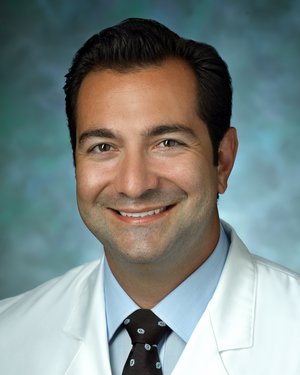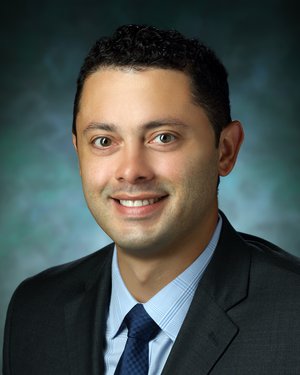-
Samuel Alaish, MD

- Surgical Director, The Hopkins Resource for Intestinal Vitality and Enhancement (THRIVE)
Expertise: Pediatric General Surgery
-
Clint Cappiello, MD

- Director, Pediatric Surgery Residency Education
Expertise: Pediatric General Surgery
-
Shaun Michael Kunisaki, MD MSC

- Robert and Jane Meyerhoff Professor
Expertise: Pediatric General Surgery
-
Isam Nasr, MD

- Director of Pediatric Trauma Program, Division of Pediatric Surgery
Expertise: Pediatric General Surgery
-
Daniel S. Rhee, MD MPH

- Director, Pediatric Surgical Oncology Program
Expertise: Pediatric General Surgery
-
Mark Slidell, MD MPH

- Associate Chief, Health Services Research and Clinical Integration, General Pediatric Surgery
Expertise: Pediatric General Surgery
The Center for Chest Wall Deformities at Johns Hopkins Children's Center is one of the longest-running programs and most experienced pediatric surgical teams in the country. Our team specializes in treatment of chest wall deformities in young children, adolescents and young adults, supporting them before, during and after correction.
On this page:
Our Team
Our highly specialized team is composed of pediatric surgeons, pediatric anesthesiologists, pediatric nurse practitioners, pediatric radiologists and a dedicated post-surgery nursing team.
Surgeons
Contact Us
Kristin Wharton, CPNP AC/PC
Please reach out to our dedicated pediatric nurse practitioner, Kristin Wharton, for any questions related to our program.

Our Research on Chest Wall Deformities
Enhanced Recovery After Surgery 2.0: Optimizing Pain Management in Nuss Procedure: Cryoablation and Nerve Block Strategies for Reduced Opioid Use | Journal of Surgical Research, 2024
Measuring Pectus Excavatum Severity, External Caliper, or Cross-Sectional Imaging: Family Perceptions | Journal of Surgical Research, 2024
Determinants of electrocardiographic abnormalities in patients with pectus excavatum | Journal of Electrocardiology, 2021
Successful Use of an Enhanced Recovery After Surgery (ERAS) Pathway to Improve Outcomes Following the Nuss Procedure for Pectus Excavatum | Journal of Pediatric Surgery, 2020
Microdeformational Wound Therapy: A Novel Option to Salvage Complex Wounds Associated with the Nuss Procedure | Journal of Pediatric Surgery, 2019
Minimally invasive repair of pectus excavatum: Analysis of the NSQIP database and the use of thoracoscopy | Journal of Pediatric Surgery, 2018
Patch Testing for Metal Allergy With Manufacturer-Supplied Materials Before Nuss Bar Insertion | Dermatitis, 2015
Pediatric surgery on YouTube™: is the truth out there? | Journal of Pediatric Surgery, 2014
Our History
Johns Hopkins was once the home of Mark Ravitch, who perfected the original open repair of pectus excavatum that bears his name. Johns Hopkins Children's Center was also the home of Alex Haller. In 1987, he introduced a radiographically defined pectus excavatum severity score using CT scans or MRIs [reference below]. This score is now referred to as the Haller index, and is used worldwide to evaluate pectus patients. A Haller index score greater than 3.25 is consistent with a severe pectus deformity.
Paul Colombani continued the long tradition of chest wall reconstruction expertise at Johns Hopkins Children’s Center, and modified the minimally invasive repair of pectus excavatum known as the Nuss procedure. The modifications allowed for improved safety during the procedure and achieved greater stability of the bar. The modified Nuss procedure at Johns Hopkins Children’s Center has allowed for decreased complications and excellent clinical results.
Haller JA Jr, Kramer SS, Lietman SA. Use of CT scans in selection of patients for pectus excavatum surgery: a preliminary report. J Pediatr Surg. 1987 Oct;22(10):904-6. doi: 10.1016/s0022-3468(87)80585-7. PMID: 3681619.


